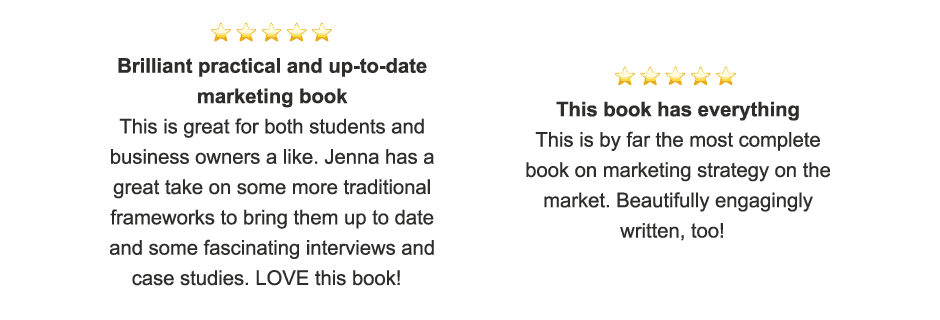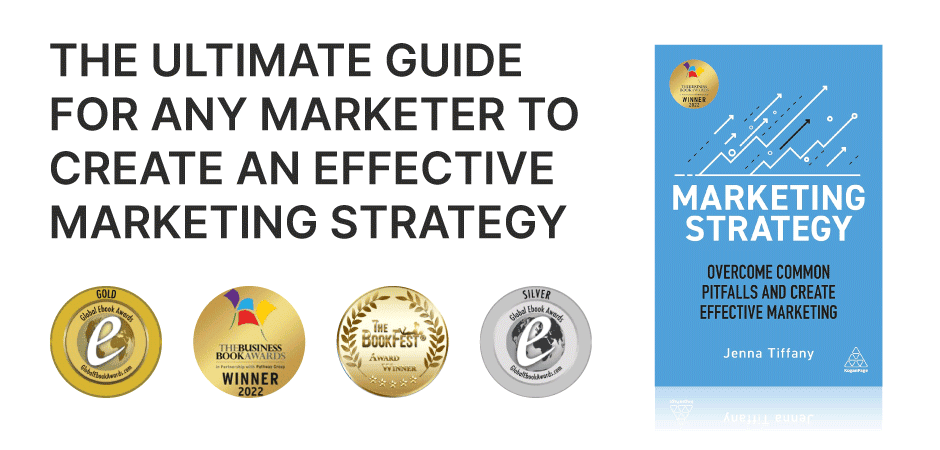One of the biggest challenges the team here at Let’sTalk Strategy is the confusion between ‘Strategy’ and ‘Tactics’. You’d be amazed at how many otherwise brilliant business leaders struggle with projects and campaigns simply because they’ve mistaken a set of tactics for a full-blown strategy.
So, let’s start by ironing out this problem. Here’s the definition from Jenna’s book - ‘Marketing Strategy’:
“Strategy is the map that takes you to your destination.
Tactics are the vehicles you use to get there.”

So, your strategy - your map - is the overarching plan. It defines what you want to achieve, why you want to achieve it, what you’re working with, who your audience is and how you can measure your success.
Tactics are a big part of your strategy, but they’re not the whole thing. A good strategy will help you to determine the best tactics to use. It will also tell you why you’re using those tactics, when to deploy them for best results, and how they can link up into a coherent campaign.
Case study: The General Motors problem
Why is it so important to get these definitions right? Because when businesses get this wrong, it never ends well.
Let us tell you about General Motors.
Once upon a time, General Motors was among the most respected vehicle manufacturers in the world. So much so that names like Pontiac, Chevrolet, Oldsmobile, Cadillac, and Buick are still famous today.
But what are they famous for? For being up to the minute, cutting-edge modern vehicles? Or for being classic, vintage cars from a bygone era?
At one point, the likes of the Cadillac and the Buick were among the best cars you could buy. They were sleek, modern, and would make their drivers the envy of the neighbourhood. So what happened? When did these car models go from being the latest in vehicle technology to beloved but vintage makes?
It all started when General Motors brought in a less strategic mode of operation.
In the 1940s the leader of GM, Alfred Sloan, took what he’d learned during WW2 and used it to construct a company along military lines, with a rigid hierarchy, formalised procedures, and thick binders full of leadership-approved marketing tactics.
In the chaos of the post-war era, this kind of solidity and authority served General Motors well. The approved tactics did their job, and did it well for years.
The problem was that, as the world changed, General Motors did not. All they had were lists and lists of tactics. There was little to no overall strategy guiding the company’s direction. What’s more, nobody who saw the problem was able to do anything about it. The military-style hierarchy of General Motors ensured that nothing was able to flow up the chain of command. The only communication between different management tiers was orders, and the orders always headed downwards.
As the 20th century wore on, General Motors struggled to compete against more fluid, agile, and (crucially) strategic companies like Ford. By the time the 21st century rolled around, GM was on its knees. The company went bankrupt in 2009, despite a billion dollar bailout from the US government.

While the company is now using a more flexible, strategic approach to painstakingly rebuild itself, decades of poor-to-nonexistent strategising have left their mark. The General Motors story should be a stark warning to every business that thinks it coast along on simple tactics alone: if a company as big and (at one time) successful as can General Motors can go bankrupt through lack of strategy, so can any company.
Where does a vision come into it?
Let’s take a look at another company, one that does understand strategy: Apple.
Apple’s trajectory has been the direct opposite of General Motors. General Motors was huge when Alfred Sloan brought in his strategy-free approach, and its fortunes dropped. By contrast, Apple began with one man and a strategic vision, and it has risen to become one of the most successful brands in human history.
Steve Jobs, founder of Apple, began with the core element of any good strategy: a vision. He wanted to create technology that everyone could use. In his own words, he wanted to
“Make the best products on earth, and to leave the world better than we found it”.

Jobs built a clever strategy around that vision, adding in clear principles and values, carefully researching the needs of consumers, and deploying the perfect tactics at the perfect time. He never deviated from his vision, even when times were tough and other companies would have abandoned their strategy in favour of cash-grab tactics.
And it worked. It more than worked. Jobs’ vision, his skill, and his strategic approach took Apple from one man tinkering in a garage to the world-conquering company they are today.
Top tips
All in all, if you want your brand to compete, to thrive, and to survive everything the future can throw at it, you need to think ‘Strategy!’ at all times.
How can you integrate strategy into your operation, and reap the rewards of strategic thinking?
Here are seven things you can do right now to build a strategic vision and start forming your own winning strategy:
- Write down your vision as succinctly as you can. Ideally, your vision will be easy to disseminate throughout your company - which means it needs to be easy to remember. The language you use should not only fit in with your brand tone of voice and company culture, it should also be extremely clear. Be succinct, be memorable, and leave absolutely no room for misinterpretation.
- Don’t come up with your vision alone. If you can, involve as many people within your organisation as possible in your vision-creation process. When people are involved in something, they become invested in it. As it’s very important that your employees feel invested in your vision, get them involved in its creation.
- Keep a close eye on your vision. Make sure that it’s being properly implemented in every department. Check up with your managers to see how vision work is going, perhaps with a monthly vision meeting.
- Reward engagement with the new vision. You could reward individual employees or entire departments, depending on what works best for your business. The important thing is that people have an incentive to engage with, promote, and work towards your vision. But do make sure that people know what these rewards are for - be really clear about the behaviour or initiatives that you’re praising. This will let everyone else know what they’re aiming for. Also be careful not to create any kind of imbalance with your rewards. You don’t want to over-reward some people, as it may create resentment in others.
- Choose the right person to deliver your vision statement. Once you’ve created your vision and condensed it into a good statement, you need to release that statement to your whole company. This is a pivotal moment, so it’s important that you choose the right person to deliver your vision. You want someone who can speak well, who is positive and likeable, and who has the authority to decisively get your message across.
- Following on from point five, make sure that everyone charged with delivering and actioning your vision statement is fully informed. They need to be able to answer any questions that may come up. If the person ‘in charge’ of your vision in any given department can’t answer questions, you risk people being confused or even losing confidence in your vision.
- Make the vision fun. People will get behind your vision if you make it as exciting, fun, and motivating as you can. From initial delivery to strategic rollout, amp up the positivity. Remember, this is an exciting new stage in your company’s growth. That’s something to be happy about! You could even throw a new vision party!
Exclusive offer, 20% off!


